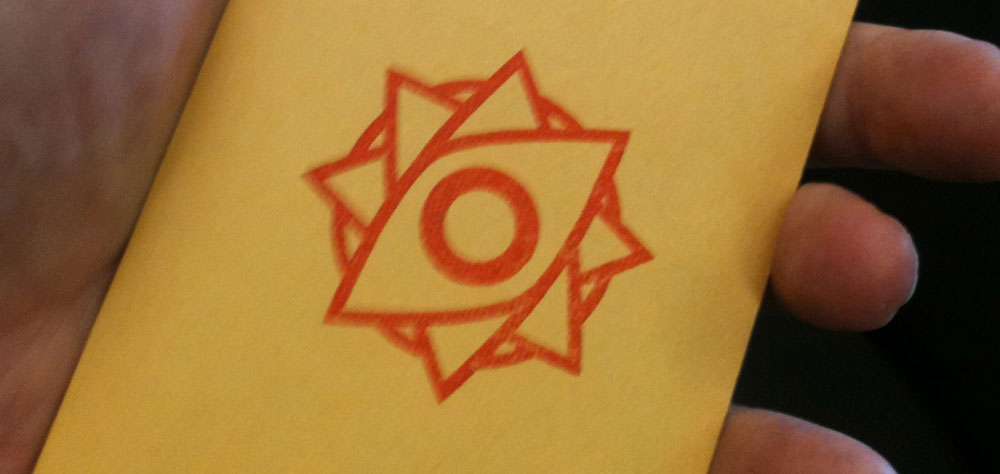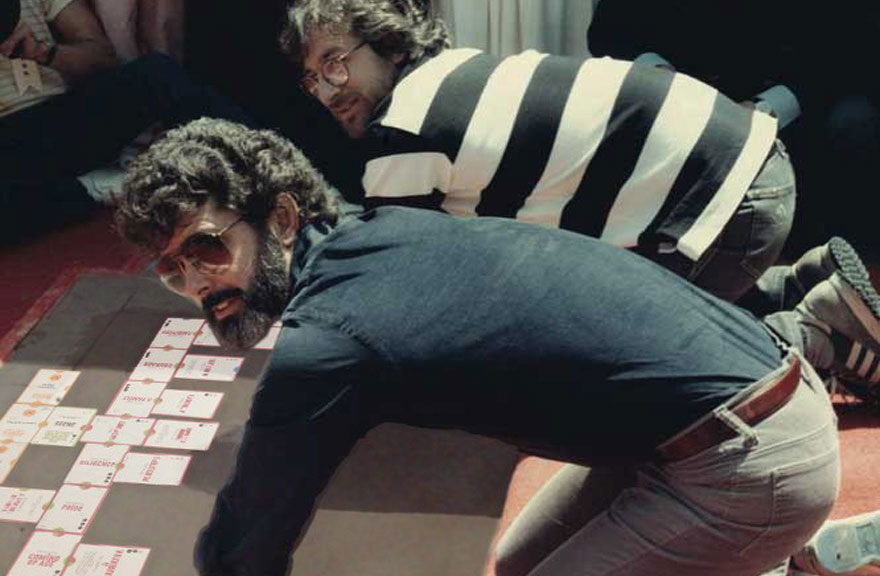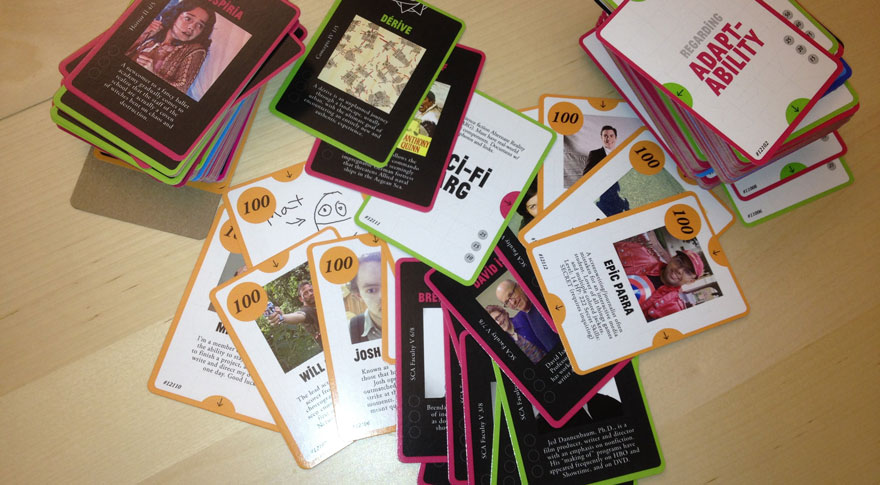Reality Ends Here
A subversive collaboratie project-making game that may or may not be ongoing at the USC School of Cinematic Arts.
What is it?
Reality Ends Here is a bit hard to describe.
It’s part Alternate Reality Game (ARG), part project collaboration and ideation tool, part school orientation program, and part subversion.
It started when some professors at the University of Southern California asked Jeff Watson if he'd like to design an ARG for the incoming freshmen class of the film school, it soon evolved.
The game focuses around a deck of cards that are assembled to create project ideas. These projects are then completed by a number of film students for points. At the end of the week, the leaders get to go on some kind of secret adventure and experience. Cover the entire game with a mysterious ambiance, cryptic puzzles, and a heavy connection to the school's alumni, and you have a basic description of it.
But this fails to cover the huge impact it’s had on creative culture at the school. It misses entirely the communal aspect that’s created long-lasting bonds and friendships, and how the ideas it seeded dramatically shifted the school curriculum and approach to teaching.
Of course, this is only true if it actually happened.
What I did
Role: Designer and Game Master
- Game, Graphic, and Experience Design
- Web Development (Wordpress)
- Logistical Planning
- Disaster put-er-out-er
- Anything and everything it took to run an ARG/game/website live
The initial team was a fellow designer and artist, Jeff Watson, Tracy Fullerton, and myself. We brought on a number of different people, mostly students, to help run the project: Anna Lotko the first year and a number of former players in the second and third.
We were supported by many members of the USC School of Cinematic Arts faculty constributed both time and effort to helping the project succeed.
A video explaining how to use the cards
Project Details
Launch
We launched fall 2011, quickly ramping up through the first few weeks of the fall semester.
Conclusion
The game ran in the form you see here for 3 years, at which point it was cancelled. The game was widely known at this point, so subversive activities were no longer possible. Allegedly, a group of renegade students may or may not be running a new version to this day.
Tools Used
- Adobe Suite
- Physical Cards
- Wordpress
- Physical props and puzzles
Recognition
Awards and Showcase
Select Coverage

A packet of Reality cards, which the students would each get when they started the game.
Inspiration, Early Ideas, and Aesthetic
Reality Ends Here was heavily influenced by interventionist art practices in the mid 1900s. Starting with the Situationist Movement out of Paris, Reality took inspiration from the art group's desire to repurpose the urban space. Given that our project was actively trying to undermine various emerging social patterns (departmental isolation, lack of creation until the 2nd year, etc.), we embraced and adapted their principles.

Urban interventions by the Situationist International in Paris in the mid 1900s
These ideas also informed our aesthetic and tonal choices. Black, subversive, coded language dominated how we communicated, whether in visuals or text, in all aspects of play. We established a "Reality Committee" that only ever communicated via puzzles, playing innocent whenever we were asked. We invented a professor for the sole purpose of co-opting a fake office into the game's headquarters. We created a logo and a flag and hid clues around the school, and we installed plaques that looked like they had always existed.

Did George Lucas and Steven Spielberg play Reality Ends Here in the 80s? Maybe. Maybe not.
Design And Implementation
We had a few weeks to design and build the technical back-end on this project, but we ran playtests on the cards multiple times to create the system of project proposal and creation.

A blurry picture of very early prototypes.
Comparing the photo above and below, you can already see some of the early ideas that became real: the orange cards that were other players in the game, cards that prompted creation, and cards that were properties of the media. But many things changed: the pink card that described famous or important media-related information were moved to the back of the cards, properties of media were developed out significantly, and we introduced blue special cards. And of course, we created the connecting system rather than just laying them out, which introduced another limitation with just enough complexity to make it interesting.
We didn't have time to balance any kind of point system, so we decided on a somewhat arbitrary value for each ("Is this easy to use in a project? Yes? OK it's worth not that many points."). We did, however, create a rule that let each card only be used 3 times. After that, it had no value. It could still be used, but was worth nothing.

An example 'property card' from the first season. A lot of details are here: quotes from a film, points, color-coded connecting system, card numbers, information about real-world people or important items in various categories on the back, etc.

Final cards from the second season. For the 2nd and 3rd season, we created official orange cards for the winners from the previous season as a way to spur inter-class collaboration and reward students. These cards ended up being far more valuable than any other prize for said winners.
The website was used to record activity, log points, leave comments, and for the students to message and coordinate with one another, although the latter activity mostly happened in-person. It was also a place where we'd frequency release hidden clues and cryptic messages to students with keen eyes. The site design was simple, chunky, mostly dark but with pangs of bright and brilliant colour.

A clue hidden on the website prompting students who discovered the page to arrive at a specific place at a specific time. Often these locations were new or lesser known locations on-campus, and there was often some kind of experience waiting for them. "John" in the page title refers to a specific person.

Example screenshot of a submitted project page. You can see a 'justification' video, where students had to come and explain how they used each card, the list of cards used on the right, and various comments to each project.
The last key component of the game was the Game Office, a physical location that grounded most of the official activities of the game. It was from here, with the doors closed, that we ran the game, and pretended it didn't exist and that we were just normal professors and graduate students when the doors were open. But there was the official Reality Ends Here flag set up and a camera in the corner where they could film justification videos and they somehow appeared on the site later in the day when the office closed.

The game office with (from left to right) myself, Jeff Watson, and Anna Lotko running the game in its first year, 2011.

A card with a clue, attached to a magnet and an LED, throw underneath a stairwell.